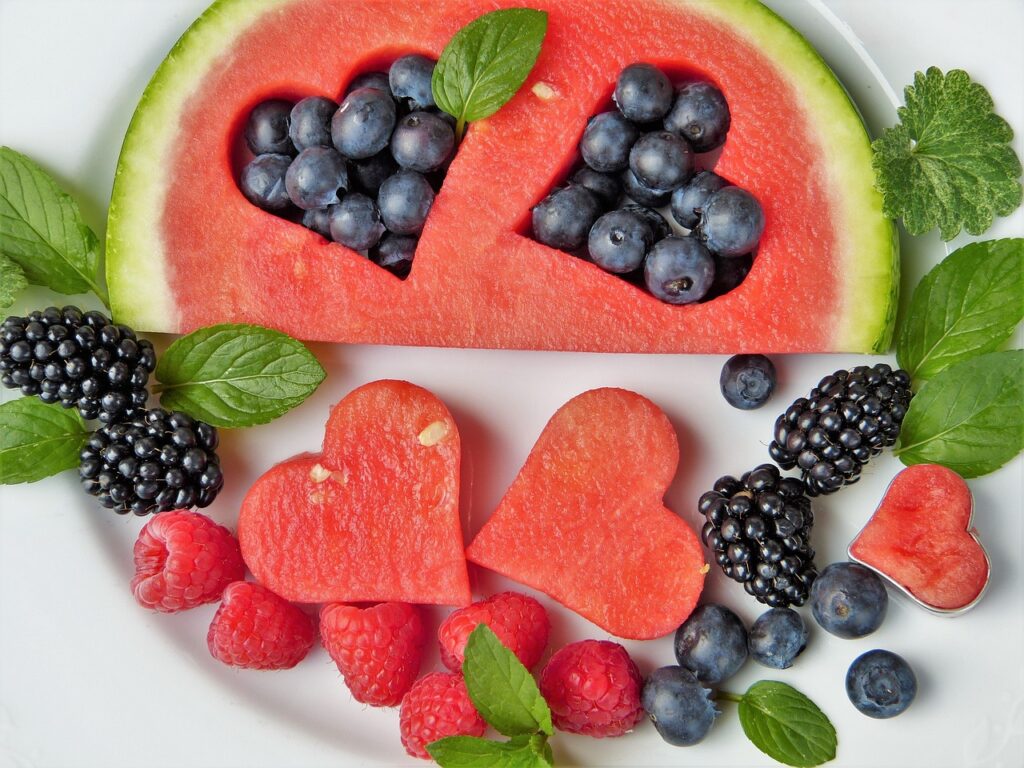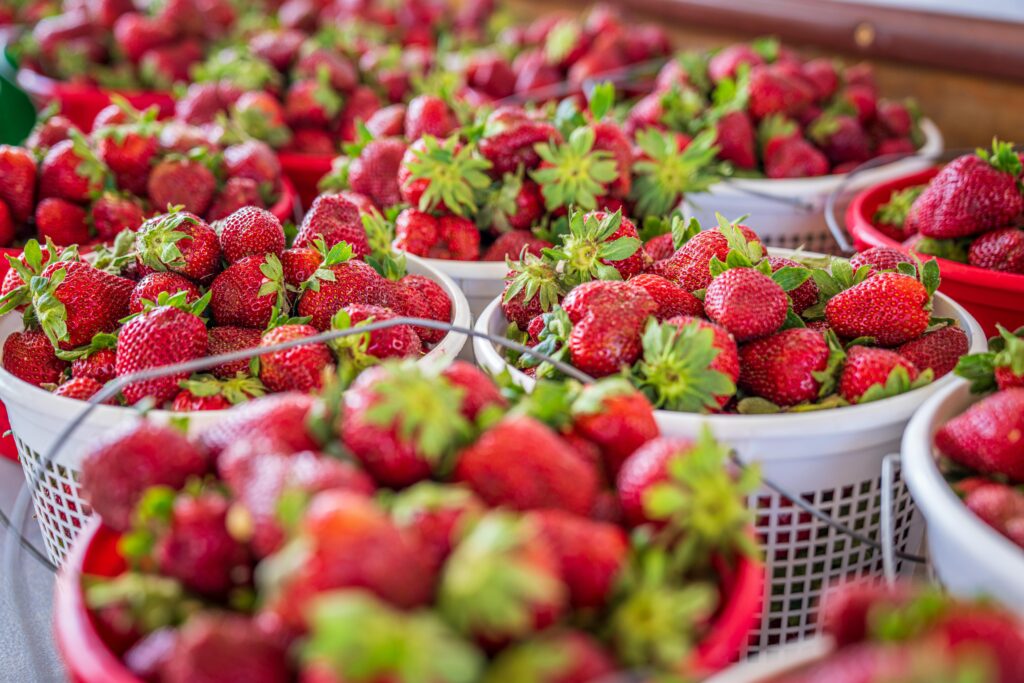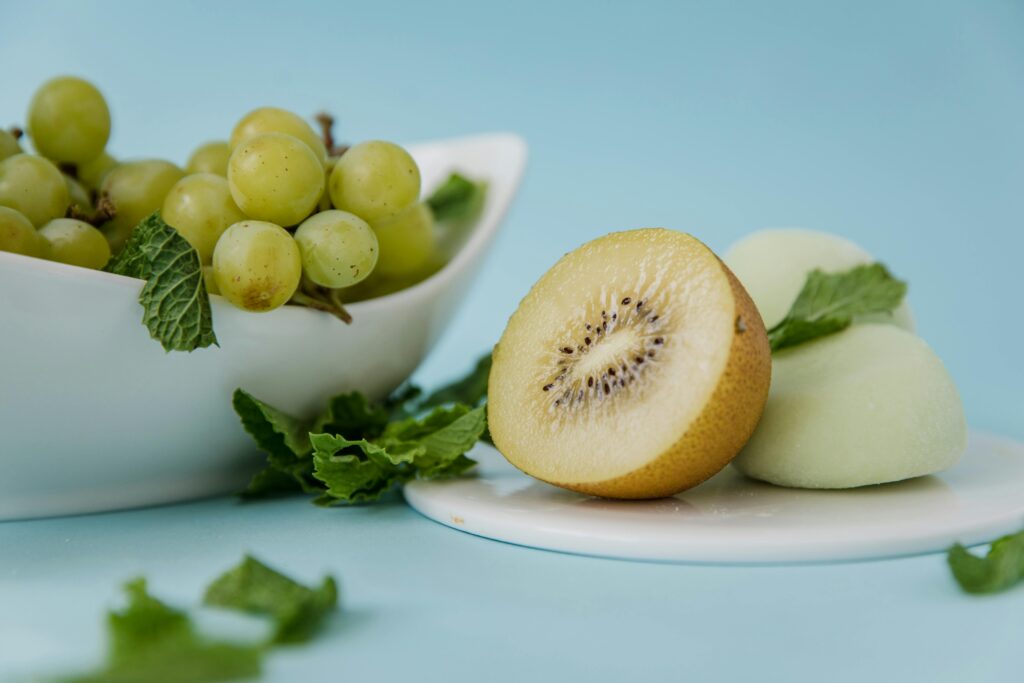This series puts the spotlight on functional food: ingredients that are packed with nutrients and easy to incorporate into busy schedules. Today we explore one of the best and tastiest parts of summer: Berries!

All about berries
As the weather warms, summer’s sweetest treat reigns supreme. The ripe, juicy berries that you find now are not only delicious, but they are among the healthiest foods you can find.
Berries can range from tart to sweet and can be used in recipes ranging from salads to meats to deserts. They come in a wide range of colors, including red, blue, black, yellow, and white, each offering different nutrients and antioxidants. They also are full of vitamins, minerals, antioxidants, and dietary fiber that are important to our health.
Surprisingly berries are not limited to just blueberries and cranberries. They are broadly defined as coming from a single ovary of an individual flower. This means that things like bananas, eggplant, grapes and cucumbers are actually berries! Even stranger still, strawberries and blackberries are not truly berries (although we still included them here). They are actually made up of a bunch of individual fruits and are known as “aggregate fruits”.
Read below for a variety of berries to try! Stock up if you find a good deal and don’t worry if you can’t find these fresh. Frozen berries have the same nutritional content as fresh, so they can be enjoyed anytime.
Eat the rainbow
RED foods are high in lycopene which is a potent anti-oxidant. Lycopene has beneficial effects on the heart, lungs, brain and has been linked to decreased incidence of cancer and diabetes. Common red berries include:
- Goji berries
- Raspberries
- Tomatoes
- Strawberries

ORANGE foods are high in carotenoids, another anti-oxidant which is important in the body’s production of vitamin A. Vitamin A is necessary for eye and bone health, reproduction, immunity and cancer risk. Common orange berries include:
- Goldenberries
- Cape gooseberries
YELLOW foods are high in carotenoids like their orange counterparts, but they also contain enzymes and other ingredients important to digestion. These enzymes like bromelain found in pineapples and amylase in bananas and mangoes help break down carbohydrates for better digestion. Bananas and plantains contain pre-biotics that help feed the good bacteria of your gut. Yellow berries include:
- Bananas/plantains
- Starfruit
- Yellow tomatoes

GREEN foods are strongly correlated with heart health. These foods are high in Vitamin K which helps prevent your blood from clotting and vitamins like Potassium for your heart. They get their vibrant shade from chlorophyll, which has anti-inflammatory and anti-obesity effects. Common green berries include:
- Green apples
- Kiwi
- Green grapes
- Avocado
BLUE AND PURPLE contain anthocyanins, which are a specialized group of antioxidants. Anthocyanins are helpful in reducing inflammation which can lead to protection from diabetes. They can improve brain and heart function by dilating (opening) blood vessels, improving blood flow and through lowering cholesterol levels. They have also been shown in labs to have anti-cancer properties by blocking DNA changes and slowing or stopping growth! Common blue and purple berries include:
- Blueberries
- Blackberries
- Elderberries
- Acai berries
- Eggplant
- Purple grapes
How to Use Them
Berries are a versatile addition to any meal. Whether you are craving something sweet or savory, berries have your back.
Breakfast: Berries are a delicious addition to yogurts, oatmeal, added to pancakes or muffins or even alone on the go! Berries are also a great addition to smoothies on these hot summer days.
Lunch/dinner: Consider topping your favorite salad or sandwich with fresh strawberries or blueberries for a fresh twist. Berries combine beautifully with avocados, turkey and grains or pastas. For a heartier, savory meal, berries can be cooked to make a sauce or glaze for fish or chicken.
Dessert: Of course this wouldn’t be complete without using berries for dessert! Mixed berries combined with a little honey and lemon juice can be served alone or over angel cake. Ice cold sorbet can be quickly made by blending with a little orange juice and freezing until scoopable. They can even be used to make oatmeal crumble bars or added to muffins for a warm comforting desert.
Recipe
In light of July 11th being national blueberry muffin day, here’s a few delicious and healthy recipes to try!
Learn More
To learn more about Functional Medicine and see how it may help you, schedule a free 15 minute consultation or head to our Work With Me page! Don’t forget to sign up for our newsletter below as we delve into topics like lifestyle medicine, ingredient highlights, medication concerns and more.
Sources
- https://www.ncbi.nlm.nih.gov/pmc/articles/PMC8626194
- https://www2.ca.uky.edu/agcomm/pubs/FCS3/FCS3569/FCS3569.pdf
- https://www.health.harvard.edu/blog/phytonutrients-paint-your-plate-with-the-colors-of-the-rainbow-2019042516501
- https://www.ncbi.nlm.nih.gov/pmc/articles/PMC7770496/
- https://health.clevelandclinic.org/anthocyanins


